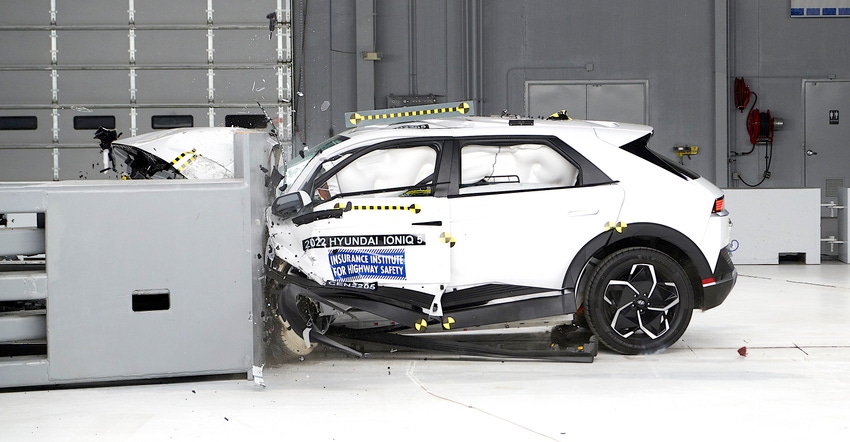The Insurance Institute for Highway Safety (IIHS) has developed partial front impact tests to simulate real-world crashes.

The Insurance Institute for Highway Safety (IIHS) crash test lab in rural Ruckersville, Virginia opened in 1992 and began performing moderate overlap front impact crash tests in 1995. At that time, IIHS found that more than half of tested vehicles earned marginal or poor scores in these tests. Today, nearly all vehicles earn good scores on the moderate overlap test, so the organization has added the even tougher small overlap test, to really put vehicles’ construction and safety systems to the test.
IIHS senior research engineer Becky Mueller explained how these tests work.
Design News: How did IIHS begin doing front crash tests?
Becky Mueller: The moderate overlap test was the first frontal crash test that the Institute began in the 1990s. We are currently working to update this crash test.
For both the original and the updated test, the vehicle crashes with about 40 percent of the width of the vehicle interacting with the barrier.
We also have another frontal crash test, the small overlap test, where only 25 percent of the width of the vehicle interacts with the barrier. We have both a driver and a passenger-side version of that test.
DN: For these impact tests, do the cars smash into a solid object, like a concrete wall, or into something deformable, like another car?
Becky Mueller: The moderate overlap barrier represents another vehicle’s front end. It’s got some elements that crush like the front end of a vehicle would crush. It is made out of an aluminum honeycomb and we tune it so that the width and the strength of that honeycomb would represent the front end of another vehicle. For this test, the vehicle interacting with this barrier represents a vehicle-to-vehicle crash of two vehicles of the same size and shape.
For vehicle rating tests, we don’t use vehicle-to-vehicle crashes. We represent that vehicle with a barrier. To develop the barrier like this, a bunch of research tests are conducted. We often do vehicle-to-vehicle as well as other vehicle-to-stationary-object tests. The final product repeatable real-world conditions.
About the Author(s)
You May Also Like





